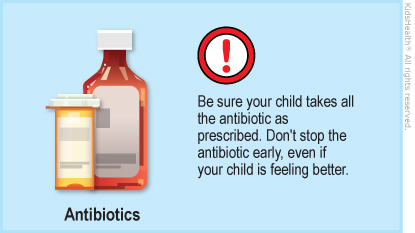Strep throat is an infection caused by a type of bacteria (group A streptococcus). Antibiotics can help your child feel better within a few days. Use these instructions to care for your child at home.



Your child:

What are the symptoms of strep throat? Kids with strep throat can have a sore throat, trouble swallowing, fever, headache, and swollen glands in their neck. They might also have belly pain, feel sick to their stomach, and throw up.
How do health care providers diagnose strep throat? Health care providers do a throat culture to test for bacteria. This is done by rubbing a swab against the back of the throat.
Is strep throat contagious? Yes. To prevent the spread of strep throat and other illnesses, kids (and adults) should: